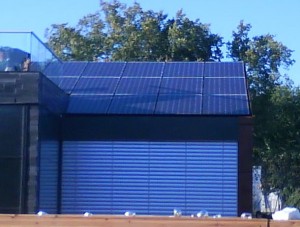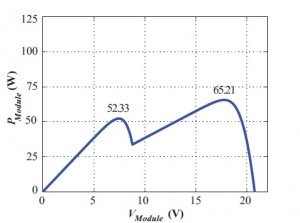Dynamic Performance of Maximum Power Point Trackers for Residential Photovoltaic Systems
Jonathan Ehlmann with adviser P.T. Krein
Residential installations differentiate themselves from utility installations. Residential PV arrays are smaller, cover less area than their utility counterparts, and react to changes in ambient conditions quicker than larger arrays. Distributed maximum power point tracker (MPPT) architectures respond even more quickly. Residential rooftops also provide less than ideal sites for installation. During the course of the day, a residential array may experience numerous instances of partial shading, as shown in Figure 23.
This research explores how fast insolation changes affect different PV systems. By “replaying” rapidly sampled insolation data and using dynamic PV models, simulations of diverse systems can be compared. Energy harvest of systems with various MPPT algorithms and speeds and panel capacitances are examined.
This research also investigates how several MPPT algorithms are affected by partial shading. When a PV panel is partially shaded, two local maxima may form in the panel’s P-V curve, as seen in Figure 24. Different methods of tracking true global maxima under partial shading conditions are examined.
This work is supported by the Grainger Center for Electric Machinery and Electromechanics.

